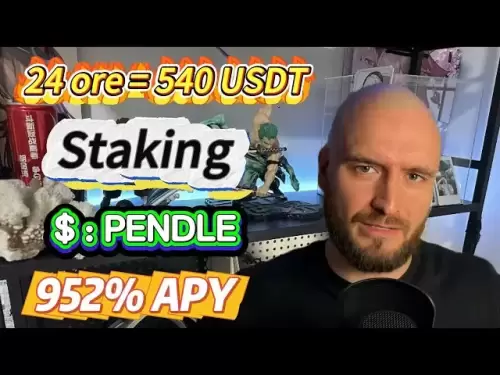-
 Bitcoin
Bitcoin $108,165.4587
0.78% -
 Ethereum
Ethereum $2,456.3517
1.15% -
 Tether USDt
Tether USDt $1.0003
0.00% -
 XRP
XRP $2.1934
0.05% -
 BNB
BNB $650.0935
0.52% -
 Solana
Solana $151.3905
2.69% -
 USDC
USDC $0.9998
0.00% -
 TRON
TRON $0.2751
-0.32% -
 Dogecoin
Dogecoin $0.1640
0.87% -
 Cardano
Cardano $0.5631
0.57% -
 Hyperliquid
Hyperliquid $38.7115
4.69% -
 Bitcoin Cash
Bitcoin Cash $493.1868
-0.39% -
 Sui
Sui $2.8217
3.61% -
 Chainlink
Chainlink $13.3994
2.08% -
 UNUS SED LEO
UNUS SED LEO $9.1632
0.94% -
 Avalanche
Avalanche $18.0318
1.97% -
 Stellar
Stellar $0.2388
0.35% -
 Toncoin
Toncoin $2.8763
1.41% -
 Shiba Inu
Shiba Inu $0.0...01160
1.59% -
 Litecoin
Litecoin $86.6393
1.29% -
 Hedera
Hedera $0.1485
0.16% -
 Monero
Monero $315.7948
1.56% -
 Polkadot
Polkadot $3.4240
1.88% -
 Bitget Token
Bitget Token $4.6314
-0.44% -
 Dai
Dai $0.9998
-0.01% -
 Ethena USDe
Ethena USDe $1.0002
-0.01% -
 Uniswap
Uniswap $7.2110
2.59% -
 Aave
Aave $270.6087
6.07% -
 Pi
Pi $0.5350
0.52% -
 Pepe
Pepe $0.0...09545
1.26%
How to evaluate the pros and cons of the token economic model? Which indicators are key reference factors?
A well-designed token economic model can increase value and promote network growth, while a poor model may lead to value dilution and centralization.
May 08, 2025 at 01:28 pm
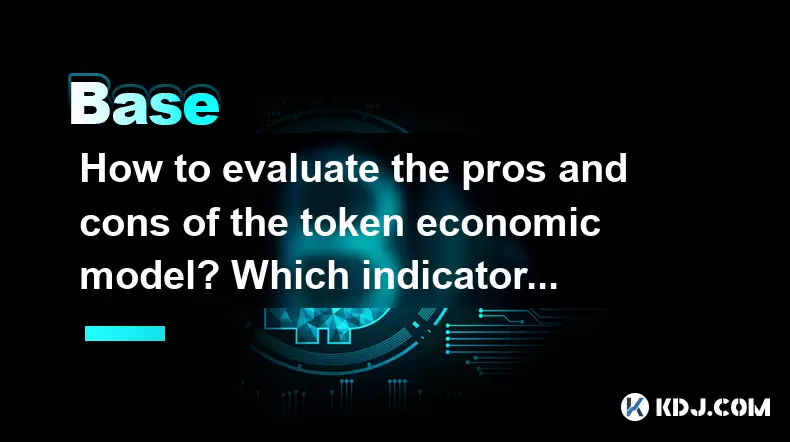
Evaluating the pros and cons of a token economic model is crucial for understanding the potential success and sustainability of a cryptocurrency project. A token economic model outlines how a token is created, distributed, and used within a blockchain ecosystem. To effectively assess such a model, it's essential to consider several key indicators and factors. This article will delve into the process of evaluating token economic models and highlight the critical reference factors that should guide your analysis.
Understanding the Token Economic Model
A token economic model is the backbone of any cryptocurrency project, defining the rules and mechanisms governing the token's supply, demand, and utility. The model impacts the token's value and the overall health of the ecosystem. To evaluate it, you must first understand its components, including token supply, distribution mechanisms, token utility, and the incentives for participants.
Key Indicators for Evaluating Token Economic Models
When assessing a token economic model, several key indicators serve as crucial reference factors. These indicators help in determining the model's effectiveness and potential pitfalls.
Token Supply and Inflation Rate
Token supply refers to the total number of tokens that will ever exist, while inflation rate indicates how the supply changes over time. A well-designed token economic model should have a clear and transparent supply schedule.
- Fixed Supply: A fixed supply, like Bitcoin's 21 million coins, can create scarcity, potentially driving up value if demand increases.
- Inflation Rate: A high inflation rate can dilute the value of existing tokens, while a low or negative inflation rate might lead to deflation, where the token's value increases over time due to reduced supply.
Distribution Mechanism
The distribution mechanism determines how tokens are allocated among participants. A fair and equitable distribution can foster a healthy and decentralized network.
- Initial Distribution: Evaluate whether the initial distribution favors a few large holders or is spread across many participants. A concentration of tokens in a few hands can lead to centralization and manipulation.
- Ongoing Distribution: Consider how new tokens are distributed, whether through mining, staking, or other means. A model that rewards active participation can encourage network growth and security.
Token Utility and Use Cases
Token utility refers to the practical uses of the token within its ecosystem. A token with strong utility is more likely to maintain or increase its value.
- Payment for Services: Tokens used to pay for services or access within the ecosystem can drive demand.
- Governance: Tokens that grant voting rights or governance over the project can incentivize long-term holding and community engagement.
- Staking and Rewards: Tokens used for staking or earning rewards can encourage holders to lock up their tokens, reducing circulating supply and potentially increasing value.
Incentive Structures
Incentive structures are crucial for aligning the interests of different stakeholders, including developers, investors, and users.
- Developer Incentives: Evaluate whether the model incentivizes developers to continue improving the project. This might include token allocations or revenue-sharing models.
- User Incentives: Consider how the model encourages user adoption and retention. This could be through rewards for using the token or participating in the ecosystem.
- Investor Incentives: Assess whether the model provides clear and attractive returns for investors, balancing short-term gains with long-term sustainability.
Network Effects and Scalability
Network effects refer to the value added to the ecosystem as more users join. A token economic model should be designed to leverage these effects and support scalability.
- Adoption: Evaluate how the model encourages widespread adoption. A growing user base can increase the token's utility and demand.
- Scalability: Consider whether the model can handle increased transaction volumes without compromising performance or security.
Evaluating the Pros and Cons
To effectively evaluate the pros and cons of a token economic model, you need to consider how each of the above indicators impacts the model's overall effectiveness and potential for success.
Pros of a Well-Designed Token Economic Model
- Increased Value: A model that balances supply and demand effectively can lead to an increase in token value over time.
- Network Growth: A model that incentivizes participation can drive network growth, enhancing the ecosystem's overall value.
- Decentralization: A fair distribution mechanism can promote decentralization, reducing the risk of manipulation and central points of failure.
- Sustainability: A model with strong utility and incentives can ensure the project's long-term sustainability.
Cons of a Poorly Designed Token Economic Model
- Value Dilution: An unchecked inflation rate can dilute the value of existing tokens, leading to a loss of confidence among holders.
- Centralization: A skewed distribution can lead to centralization, where a few large holders control the majority of the tokens.
- Lack of Adoption: A model that fails to incentivize user adoption can result in a stagnant or declining ecosystem.
- Incentive Misalignment: Poorly designed incentives can lead to short-term thinking and undermine the project's long-term goals.
Practical Steps to Evaluate a Token Economic Model
Evaluating a token economic model involves a detailed analysis of its components and their interplay. Here are some practical steps to guide your evaluation:
- Review the Whitepaper: Start by reading the project's whitepaper, which should outline the token economic model in detail.
- Analyze Token Supply: Look at the total supply and how it changes over time. Consider whether the supply schedule is transparent and well-justified.
- Assess Distribution: Examine the initial and ongoing distribution mechanisms. Look for signs of fairness and decentralization.
- Evaluate Utility: Consider the practical uses of the token within the ecosystem. Assess whether the utility is strong enough to drive demand.
- Examine Incentives: Analyze the incentive structures for developers, users, and investors. Determine whether they align with the project's long-term goals.
- Consider Network Effects: Evaluate how the model leverages network effects and supports scalability. Look for evidence of growing adoption and usage.
- Compare with Similar Projects: Benchmark the token economic model against similar projects to identify strengths and weaknesses.
Frequently Asked Questions
Q: How can I tell if a token economic model is sustainable in the long term?
A: To determine the long-term sustainability of a token economic model, look for a balance between supply and demand, strong token utility, fair distribution, and well-aligned incentives. A model that encourages ongoing participation and growth while maintaining a stable or appreciating token value is more likely to be sustainable.
Q: What role does community feedback play in evaluating a token economic model?
A: Community feedback is crucial for evaluating a token economic model. Active community engagement can provide insights into the model's effectiveness and areas for improvement. Look for projects that actively seek and incorporate community feedback, as this can enhance the model's adaptability and resilience.
Q: Can changes to a token economic model impact its evaluation?
A: Yes, changes to a token economic model can significantly impact its evaluation. Projects that adapt their models based on market conditions or community feedback may improve their effectiveness. However, frequent or poorly communicated changes can also lead to uncertainty and reduced trust among participants.
Q: How important is the team behind the project in evaluating the token economic model?
A: The team behind the project is very important in evaluating the token economic model. A competent and experienced team is more likely to design and implement a robust and effective model. Evaluate the team's track record, expertise, and communication to gauge their ability to manage and evolve the token economic model effectively.
Disclaimer:info@kdj.com
The information provided is not trading advice. kdj.com does not assume any responsibility for any investments made based on the information provided in this article. Cryptocurrencies are highly volatile and it is highly recommended that you invest with caution after thorough research!
If you believe that the content used on this website infringes your copyright, please contact us immediately (info@kdj.com) and we will delete it promptly.
- South Korea, Crypto, and Global Markets: Riding the Digital Wave to New Highs
- 2025-06-29 20:50:12
- Bitcoin Eyes $108K: Will Trump's Nod Push BTC to a New All-Time High?
- 2025-06-29 21:10:12
- Pengu Pumps: Bullish Flags and Whale Wallets Fuel the Fire!
- 2025-06-29 21:10:12
- XRP to $20,000? Crypto Developers Eyeing Ripple's Potential
- 2025-06-29 21:15:12
- Sui's DeFi Lending Landscape: Suilend Leading the Charge
- 2025-06-29 21:30:12
- Bitcoin Whale Goes Long: Will the Bitcoin Price Follow?
- 2025-06-29 21:30:12
Related knowledge
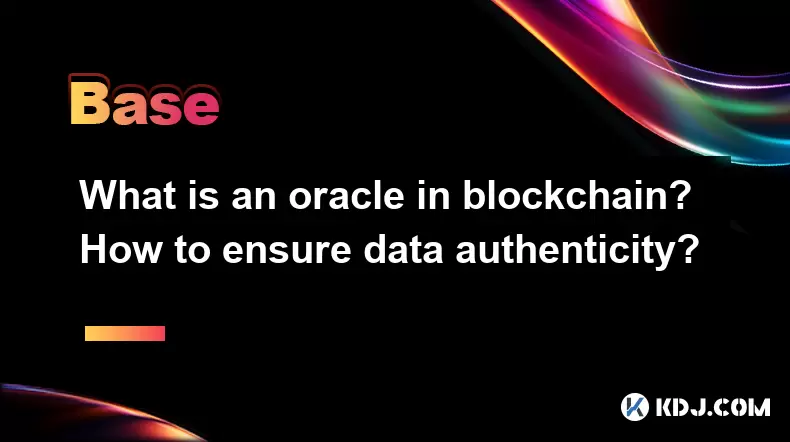
What is an oracle in blockchain? How to ensure data authenticity?
Jun 19,2025 at 08:49pm
Understanding the Role of an Oracle in BlockchainIn the context of blockchain technology, an oracle serves as a bridge between the blockchain and external data sources. While blockchains are inherently secure and decentralized, they cannot access real-world information on their own. Oracles enable smart contracts to interact with off-chain data such as ...
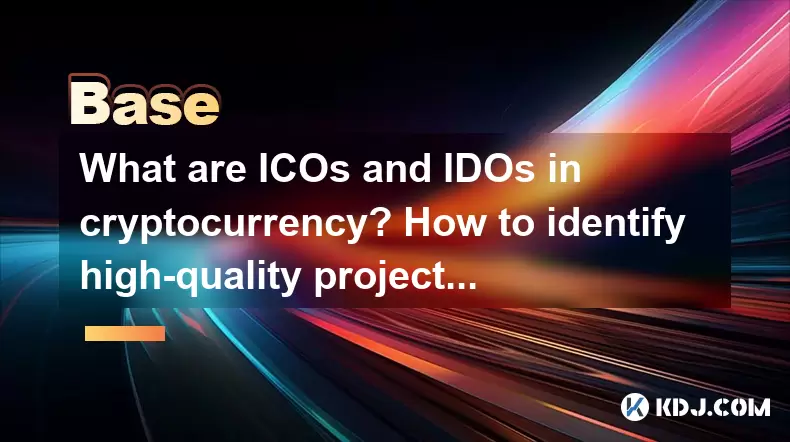
What are ICOs and IDOs in cryptocurrency? How to identify high-quality projects?
Jun 22,2025 at 11:49am
Understanding ICOs in CryptocurrencyInitial Coin Offerings (ICOs) are fundraising mechanisms used by cryptocurrency startups to raise capital for their projects. In an ICO, a company creates and sells its own tokens to investors in exchange for established cryptocurrencies like Bitcoin or Ethereum. The process typically involves the release of a whitepa...
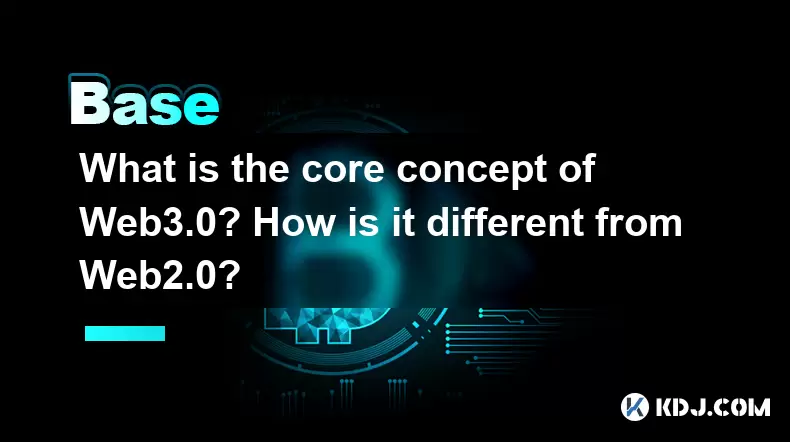
What is the core concept of Web3.0? How is it different from Web2.0?
Jun 21,2025 at 05:56pm
Decentralization as the Foundation of Web3.0The core concept of Web3.0 revolves around decentralization, which fundamentally challenges the centralized architecture of Web2.0. In Web3.0, control and ownership are distributed across a network rather than being held by a central authority or corporation. This is achieved primarily through blockchain techn...
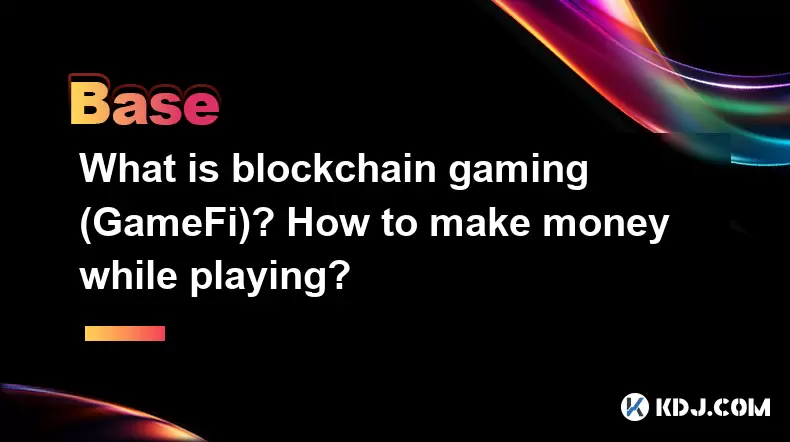
What is blockchain gaming (GameFi)? How to make money while playing?
Jun 20,2025 at 07:56am
Understanding Blockchain Gaming (GameFi)Blockchain gaming, often referred to as GameFi, is a fusion of blockchain technology and video games. It enables players to own in-game assets through non-fungible tokens (NFTs) and earn rewards via cryptocurrencies or token-based systems. Unlike traditional games where items are controlled by centralized develope...
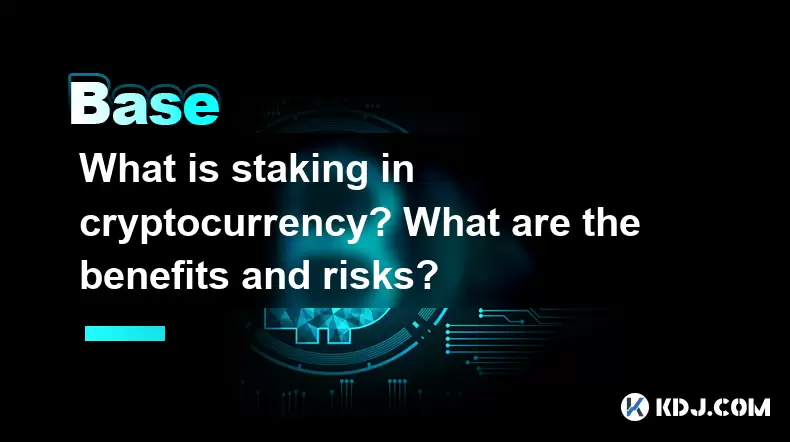
What is staking in cryptocurrency? What are the benefits and risks?
Jun 22,2025 at 10:01am
Understanding the Concept of Staking in CryptocurrencyStaking in cryptocurrency refers to the process of actively participating in transaction validation on a blockchain network that uses a Proof-of-Stake (PoS) consensus mechanism. Instead of miners competing to solve complex mathematical puzzles as in Proof-of-Work systems like Bitcoin, PoS blockchains...

How does the Lightning Network solve Bitcoin congestion? What is the usage process?
Jun 23,2025 at 06:21pm
Understanding Bitcoin Network CongestionBitcoin, as a decentralized digital currency, operates on a blockchain that records every transaction in a public ledger. Each block has a limited size, typically 1 megabyte, which allows for only a certain number of transactions per second (TPS). When the number of transactions increases, the network becomes cong...

What is an oracle in blockchain? How to ensure data authenticity?
Jun 19,2025 at 08:49pm
Understanding the Role of an Oracle in BlockchainIn the context of blockchain technology, an oracle serves as a bridge between the blockchain and external data sources. While blockchains are inherently secure and decentralized, they cannot access real-world information on their own. Oracles enable smart contracts to interact with off-chain data such as ...

What are ICOs and IDOs in cryptocurrency? How to identify high-quality projects?
Jun 22,2025 at 11:49am
Understanding ICOs in CryptocurrencyInitial Coin Offerings (ICOs) are fundraising mechanisms used by cryptocurrency startups to raise capital for their projects. In an ICO, a company creates and sells its own tokens to investors in exchange for established cryptocurrencies like Bitcoin or Ethereum. The process typically involves the release of a whitepa...

What is the core concept of Web3.0? How is it different from Web2.0?
Jun 21,2025 at 05:56pm
Decentralization as the Foundation of Web3.0The core concept of Web3.0 revolves around decentralization, which fundamentally challenges the centralized architecture of Web2.0. In Web3.0, control and ownership are distributed across a network rather than being held by a central authority or corporation. This is achieved primarily through blockchain techn...

What is blockchain gaming (GameFi)? How to make money while playing?
Jun 20,2025 at 07:56am
Understanding Blockchain Gaming (GameFi)Blockchain gaming, often referred to as GameFi, is a fusion of blockchain technology and video games. It enables players to own in-game assets through non-fungible tokens (NFTs) and earn rewards via cryptocurrencies or token-based systems. Unlike traditional games where items are controlled by centralized develope...

What is staking in cryptocurrency? What are the benefits and risks?
Jun 22,2025 at 10:01am
Understanding the Concept of Staking in CryptocurrencyStaking in cryptocurrency refers to the process of actively participating in transaction validation on a blockchain network that uses a Proof-of-Stake (PoS) consensus mechanism. Instead of miners competing to solve complex mathematical puzzles as in Proof-of-Work systems like Bitcoin, PoS blockchains...

How does the Lightning Network solve Bitcoin congestion? What is the usage process?
Jun 23,2025 at 06:21pm
Understanding Bitcoin Network CongestionBitcoin, as a decentralized digital currency, operates on a blockchain that records every transaction in a public ledger. Each block has a limited size, typically 1 megabyte, which allows for only a certain number of transactions per second (TPS). When the number of transactions increases, the network becomes cong...
See all articles





















